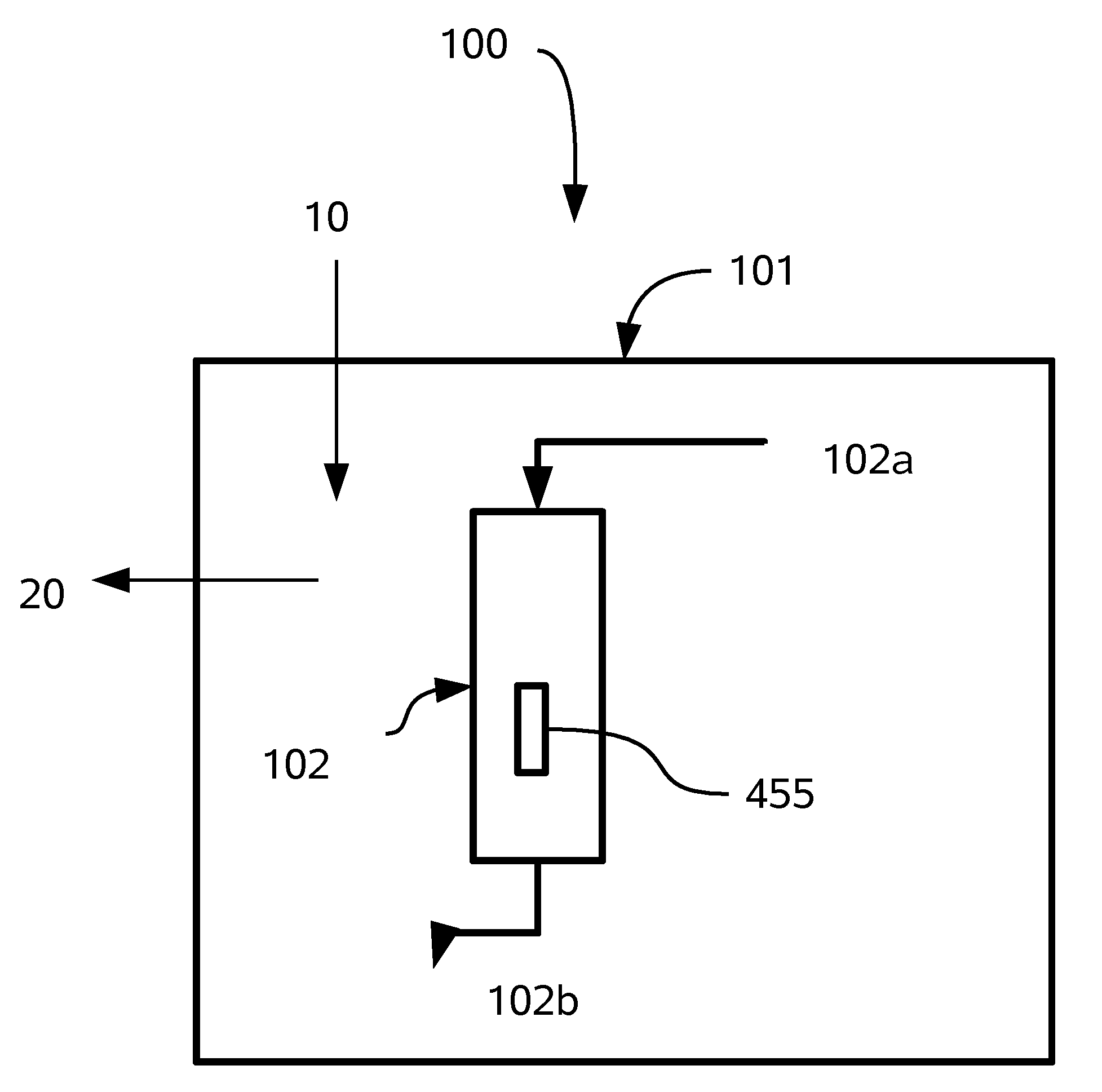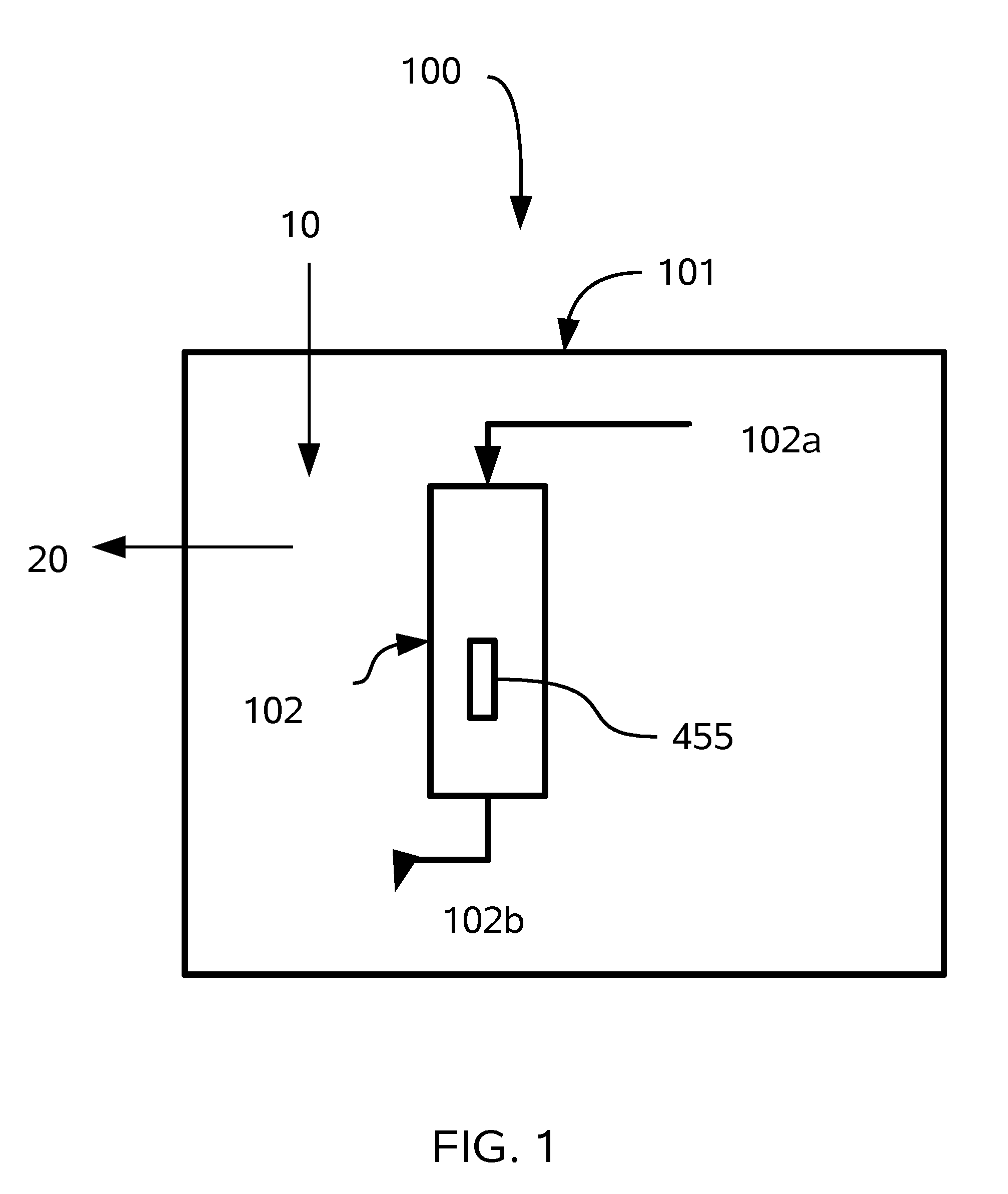Wastewater Purification Method and Apparatus
a technology of aeration device and sewage, which is applied in the direction of biological water/sewage treatment, filtration separation, and separation processes, etc., can solve the problems of complex organic waste, toxic compound, and relatively toxic nitrites
- Summary
- Abstract
- Description
- Claims
- Application Information
AI Technical Summary
Benefits of technology
Problems solved by technology
Method used
Image
Examples
Embodiment Construction
[0054]Referring to FIGS. 1 through 8, wherein like reference numerals refer to like components in the various views, there is illustrated therein a new and improved apparatus and method for wastewater treatment, generally denominated 100 herein.
[0055]The inventor has discovered that the reaction of autotrophic ammonia oxidizing bacteria in a sealed tank of the prior art reactors is considerably less stable than that found in the soil. In a pre-existing leach field one finds several hundred cubic feet of soil that is permeated with a firmly established colony of autotrophic ammonia oxidizers. The facultative organisms introduced into this environment through the use of the aerobic bacterial generator described in U.S. Pat. No. 6,780,318 will not competitively exclude the Nitrosomonas type organisms and will instead supplant the Nitrobacter type organisms in a new form of syntrophic association with Nitrosomonas.
[0056]This is consistent with the inventor's observations that the react...
PUM
| Property | Measurement | Unit |
|---|---|---|
| Residence time | aaaaa | aaaaa |
| Residence time | aaaaa | aaaaa |
| Residence time | aaaaa | aaaaa |
Abstract
Description
Claims
Application Information
 Login to View More
Login to View More - R&D
- Intellectual Property
- Life Sciences
- Materials
- Tech Scout
- Unparalleled Data Quality
- Higher Quality Content
- 60% Fewer Hallucinations
Browse by: Latest US Patents, China's latest patents, Technical Efficacy Thesaurus, Application Domain, Technology Topic, Popular Technical Reports.
© 2025 PatSnap. All rights reserved.Legal|Privacy policy|Modern Slavery Act Transparency Statement|Sitemap|About US| Contact US: help@patsnap.com



